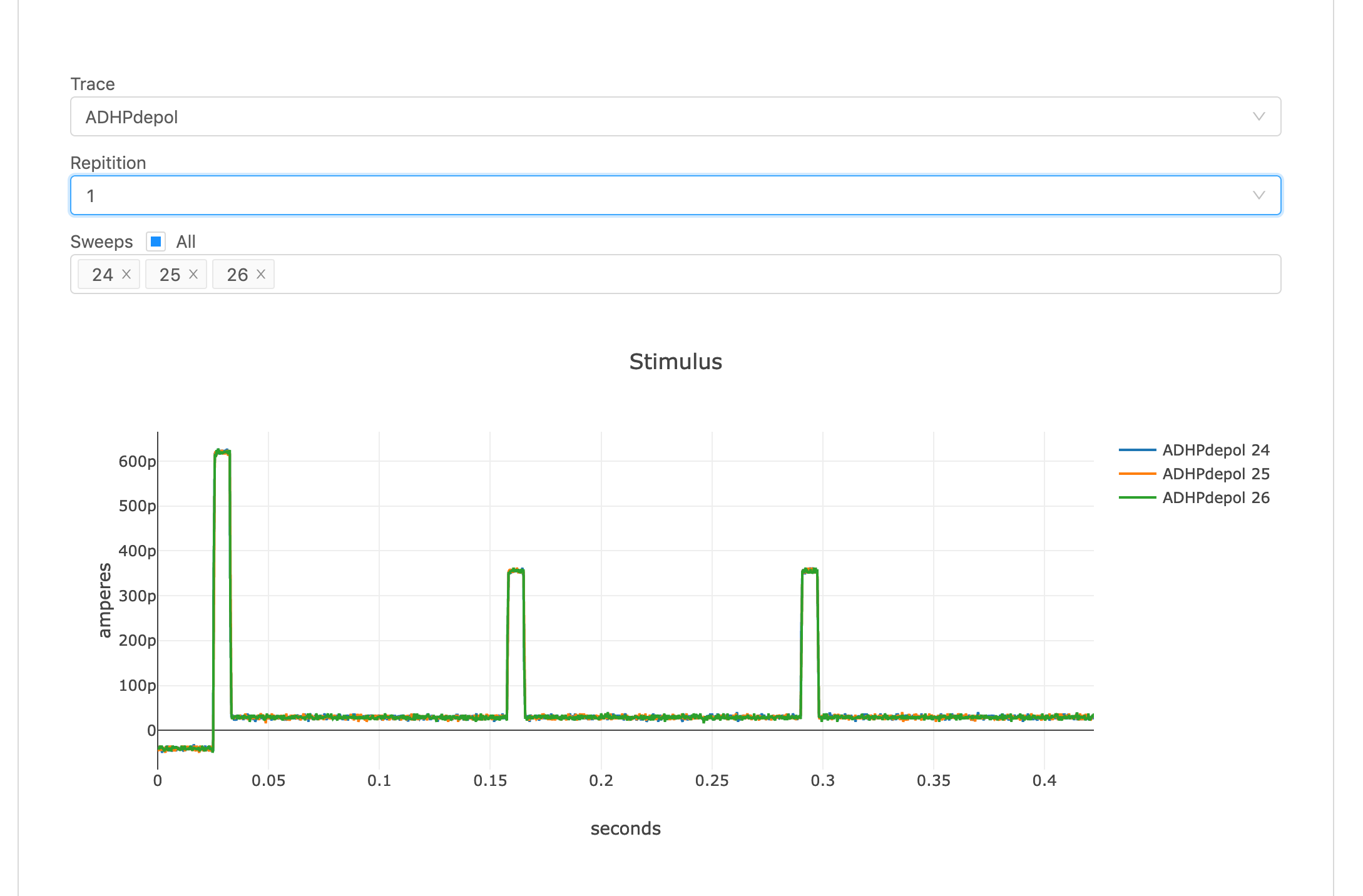You are browsing the docs for Nexus v1.5.x, the latest release is available here
Plugins
A resource returned by the Nexus Delta API is usually a JSON-LD document. By default Nexus Fusion displays JSON-LD in a code editor. If the user has edit access to the document, they can update the resource in the editor.
Resources can represent a wide variety of scientific artifacts. It can be a neuron morphology, neuron electrophysiology, a set of files to download, a set of images and so on. So a user may want to extend Nexus Fusion to allow them to visualize or otherwise extend the presentation layer with logic specific to their resource type. Plugins are a way to accomplish this.
What are Plugins
A core component of Studio is the ability for data curators to develop a domain-specific presentation layer for their resources in Nexus Fusion. This allows data consumers to visualize their datasets using graphs, charts, or 3D visualizations, and to present the relevant metadata to the user.
Plugins are developed using Javascript and are loaded into the Nexus Fusion instance from the /plugins folder.
Plugin examples
Below you can find the screenshots from some plugins that can be integrated into Nexus Fusion. They extend the Nexus Fusion presentation layer.
Neuron Electro physiology viewer 
MINDS Metedata viewer 
Data download plugin 
Development
Your plugin must export a default function with the following signature:
export default ({ ref: HTMLElement, nexusClient: NexusClient, resource: Resource<T> }) => {
return () => {
// optional callback when your plugin is unmounted from the page
};
};
Nexus Plugins uses SystemJS.
You have to transpile and bundle your code using SystemJS as output:
Configuring Nexus Fusion to run your plugins
Once you have your Javascript bundled into a single file, you can place it in the ./plugins folder at the root of your Nexus Fusion instance.
Plugins should follow this folder naming convention:
.
│ README.md
│
└───plugins
│ └───my-nexus-plugin
│ │ index.js
│ └───yet-another-nexus-plugin
│ │ index.js
│ ...
Plugin Manifest
The plugin manifest should be available at the same remote endpoint as the plugins. This is so Nexus Fusion can find the plugins and apply them dynamically.
The plugin manifest is a JSON object with keys that correspond to the plugin name with a value that corresponds to a descriptive payload of where to find the manifest, as well as some information about it’s development. It’s similar to a package.json file.
{
"circuit": {
"modulePath": "circuit.f7755e13c8b410efdf02.js",
"name": "Circuit",
"description": "",
"version": "",
"tags": [],
"author": "",
"license": "",
"mapping": {}
}
}
Plugin Config
The plugin config should be available as an object under the mapping key of the plugin manifest. This tells Nexus Fusion when a plugin should be displayed, by matching a resource to a shape.
Matching all resources
The following will show nexus-plugin-test for every resource in Nexus Fusion.
{
"nexus-plugin-test": {
"modulePath": "nexus-plugin-test.js",
"name": "Nexus Plugin Test",
"description": "",
"version": "",
"tags": [],
"author": "",
"license": "",
"mapping": {}
}
}
Matching a resource with a specific type and shape
The following will show nexus-plugin-test for any resource of type File but only if they have a distribution.encodingFormat property that’s application/swc
{
"nexus-plugin-test": {
"modulePath": "nexus-plugin-test.js",
"name": "Nexus Plugin Test",
"description": "",
"version": "",
"tags": [],
"author": "",
"license": "",
"mapping": {
"@type": "File",
"distribution": {
"encodingFormat": "application/swc"
}
}
}
}
Default Plugins
Default plugins are part of Fusion. They define the default presentation of resources.
Admin Plugin
Admin Plugin displays JSON-LD in a code editor. If the user has edit access to the document, they can update the resource in the editor. It also has few additional tabs. History, Links and Graph. History tab displays the edit history of the resource. A user can explore the graph view of the resource in Graph tab. They can also view the incoming and out going links of the resource in Links tab.